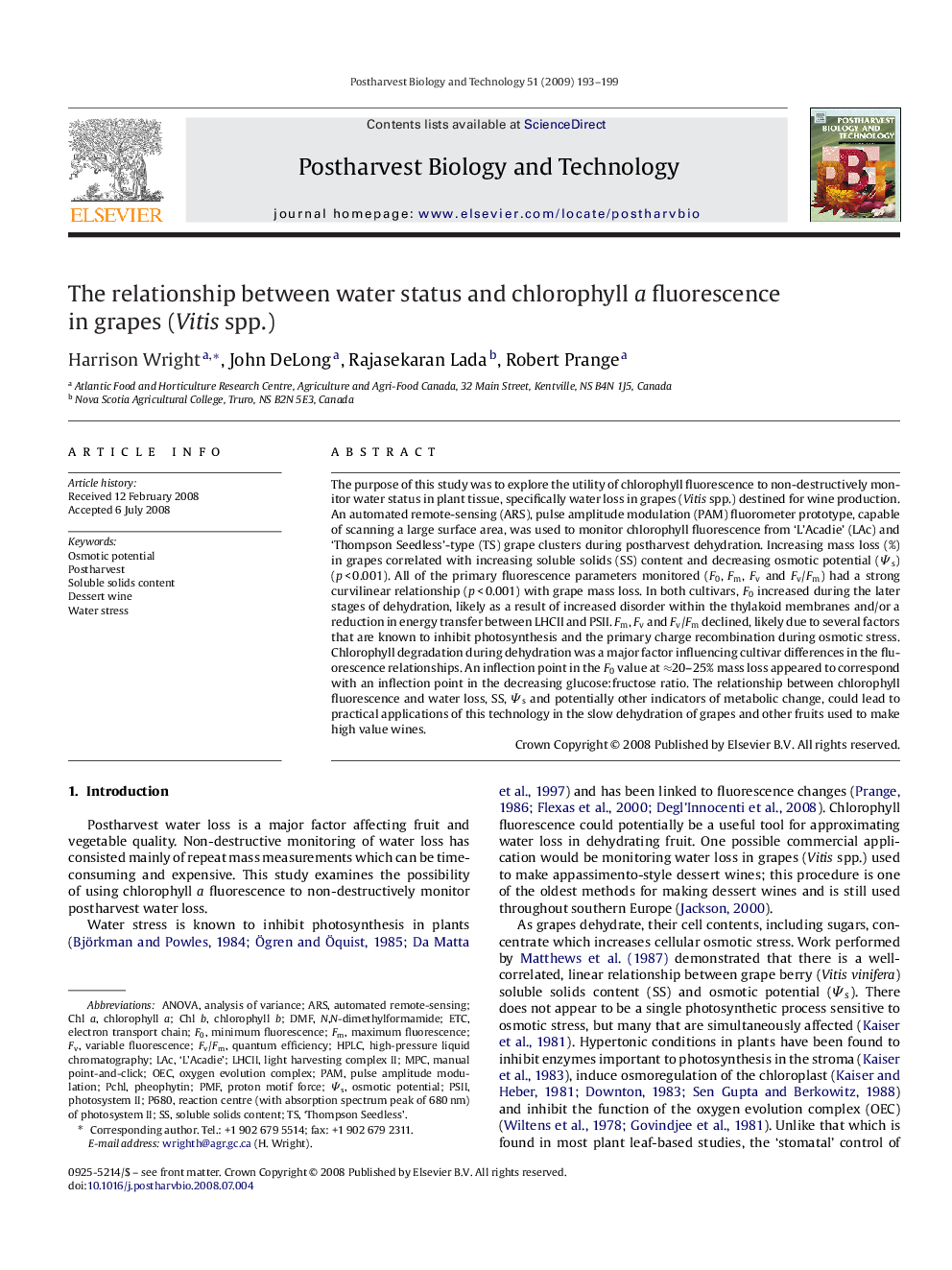| Article ID | Journal | Published Year | Pages | File Type |
|---|---|---|---|---|
| 4519371 | Postharvest Biology and Technology | 2009 | 7 Pages |
The purpose of this study was to explore the utility of chlorophyll fluorescence to non-destructively monitor water status in plant tissue, specifically water loss in grapes (Vitis spp.) destined for wine production. An automated remote-sensing (ARS), pulse amplitude modulation (PAM) fluorometer prototype, capable of scanning a large surface area, was used to monitor chlorophyll fluorescence from ‘L’Acadie’ (LAc) and ‘Thompson Seedless’-type (TS) grape clusters during postharvest dehydration. Increasing mass loss (%) in grapes correlated with increasing soluble solids (SS) content and decreasing osmotic potential (Ψs) (p < 0.001). All of the primary fluorescence parameters monitored (F0, Fm, Fv and Fv/Fm) had a strong curvilinear relationship (p < 0.001) with grape mass loss. In both cultivars, F0 increased during the later stages of dehydration, likely as a result of increased disorder within the thylakoid membranes and/or a reduction in energy transfer between LHCII and PSII. Fm, Fv and Fv/Fm declined, likely due to several factors that are known to inhibit photosynthesis and the primary charge recombination during osmotic stress. Chlorophyll degradation during dehydration was a major factor influencing cultivar differences in the fluorescence relationships. An inflection point in the F0 value at ≈20–25% mass loss appeared to correspond with an inflection point in the decreasing glucose:fructose ratio. The relationship between chlorophyll fluorescence and water loss, SS, Ψs and potentially other indicators of metabolic change, could lead to practical applications of this technology in the slow dehydration of grapes and other fruits used to make high value wines.
